EXPLORING RSPB FAIRBURN INGS

A kingfisher at Fairburn Ings
Visiting RSPB Fairburn Ings and RSPB St Aidan’s for the first time and wondering where to go and what you might see? The two reserves are a 10 minute drive from each other in West Yorkshire and are fantastically biodiverse – this post can guide your trip to Fairburn Ings.
It may be helpful to have the map of Fairburn Ings open whilst you read.
RSPB FAIRBURN INGS
Fairburn Ings is one of my favourite RSPB reserves. It’s not quite as well-known as the likes of Minsmere but it’s a hidden gem. You can hear booming bitterns, lyrical blackcaps, and laughing green woodpeckers and – because areas of it are so high up – not a lot else!
Like many of our nature reserves, it’s ex-industrial – an old coal mine. The bulk of it is made up of filled pits, but the River Aire also runs alongside the reserve.
EXPLORING THE RIVERBANK
The riverbank trail is a lovely walk along a raised bank above the river – I’d say you’re probably about 20 ft above the water. There are banks of trees on either side, and it feels like a woodland path – with occasional glances of the river below on your right and Main Bay and Village Bay lakes on the left.
As I wandered along the trail, I listened to singing blackcaps, chiffchaffs, and see-sawing great tits. I watched lots of blue tits busily investigating nesting holes and had an exciting moment where I thought I was watching a tree sparrow – he was actually a reed bunting, but I was still pleased to see him.
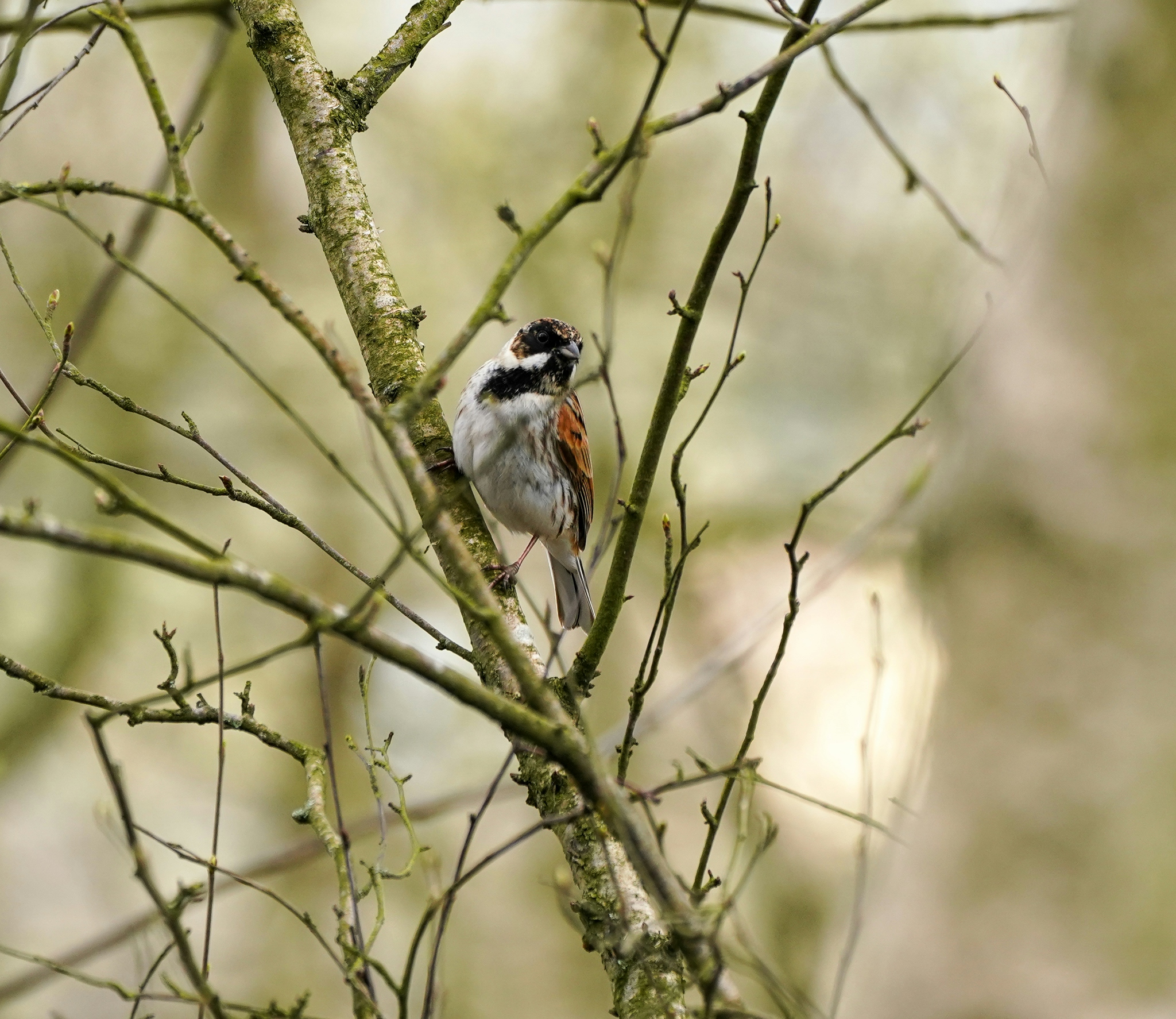
A male reed bunting
There are two hides and a viewpoint along the walk. The two hides were closed when I went due to COVID-19 restrictions but the Village Bay viewpoint, about halfway along, is worth a pit stop. I watched tufted ducks, shelducks, gadwalls and pochards across Village Bay.
Continue the walk and you’ll come out of a gate and onto the path at river level. The path continues on (away from the reserve) under a road bridge. Turn left up Cut Lane and the path passes by some lovely grazing land on the right, with Village Bay on your left. The hedgerows along this path are full of long-tailed tits, chaffinches, blue tits, great tits and sparrows.
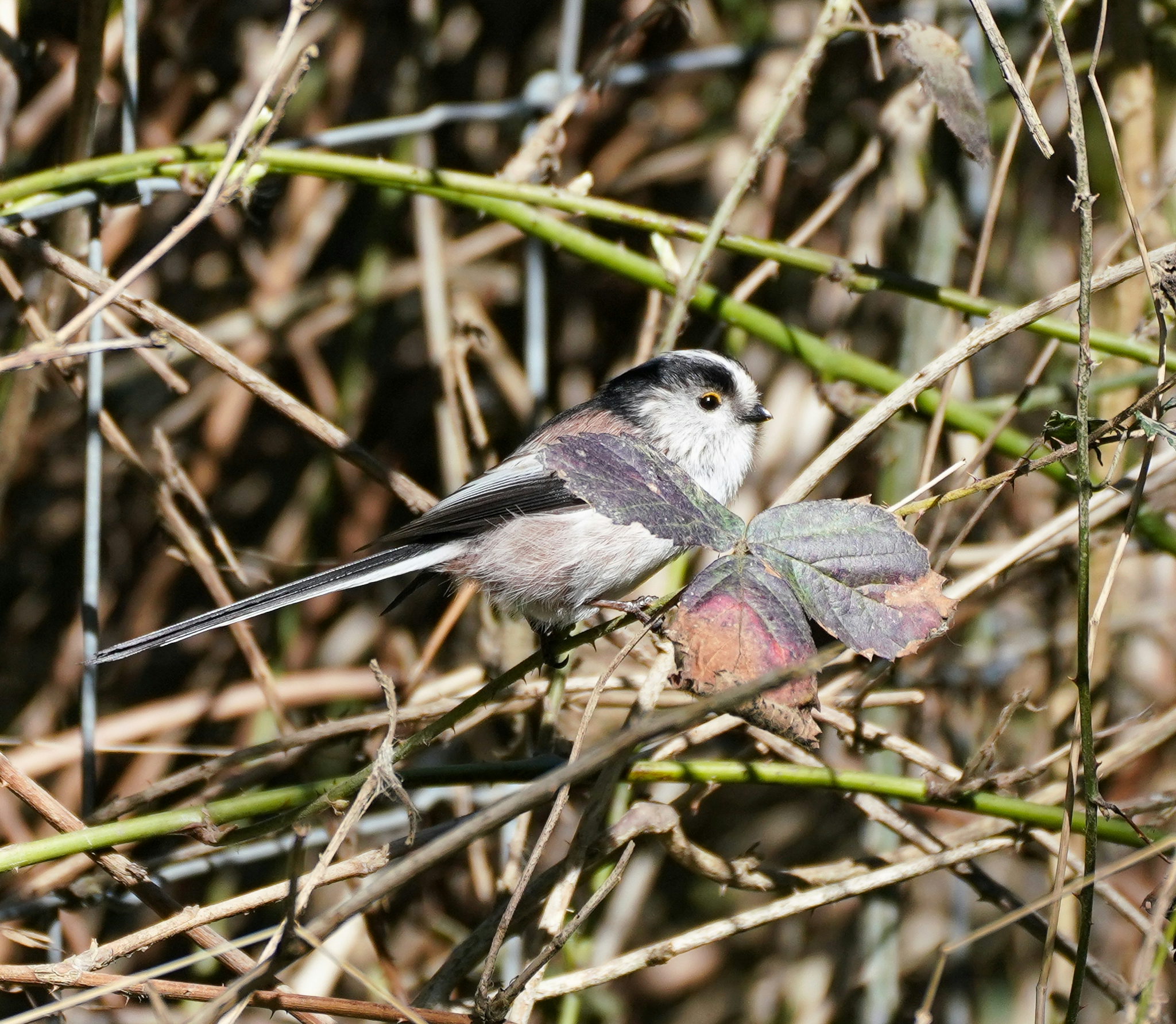
A long tailed tit on Cut Lane
There are a number of benches looking out over the water along Cut Lane but they were all closed off for safety reasons, so have a sit down on the bench by the river before you turn left.
Cut Lane ends at a footpath along the field behind Village Bay that you were looking at from the Village Bay viewpoint. A sign warns you that you need to turn around, as you can’t loop back to the reserve.
The footpath looked too tempting, so I ignored the sign and figured there must be a path along the road back to the visitors’ centre. There isn’t! After the path across the field, you get to Newton Lane which is a 60-mph road with no pavement and no footpath alongside it. It’s not safe to walk back that way, so you do have to turn back and retrace your steps along the riverbank path.
It’s annoying that there’s no circular walk, but the path is so beautiful you’ll be happy to walk it twice. Do bear this in mind though if you want to see the rest of the reserve – the riverbank path to the end of Cut Lane is 3 km/2 miles so you’ll have walked 6 km/4 miles before you explore the rest of the reserve if you go along this trail.
On my way back along, I photographed willow tits – a first for me, so keep your eyes peeled on your return trip as you might see even more than on your way out!

A willow tit
EXPLORING THE PITS
After walking along the riverbank and back, I turned to explore the filled mining pits that form the bulk of the reserve. This path is marked as the Roy Taylor trail and takes you up a hill to the three main pits.
Be warned – it’s very windy up there! On particularly windy days, it can hurt your ears or cause your camera lens to wave around, so take a hat or ear-warmer and if you’re serious about getting some bittern photos, take a monopod or tripod!
As you reach the top of the hill, turn right to loop around the pools and to get stunning views over the Moat, including Spoonbill Flash. If you look closely over that way you’ll be able to see a path through the fields to the right which joins a hedgerow opposite Spoonbill Flash – you might even be able to see the gap in the hedge that we watched the spoonbills through when they built a nest on Spoonbill Flash!
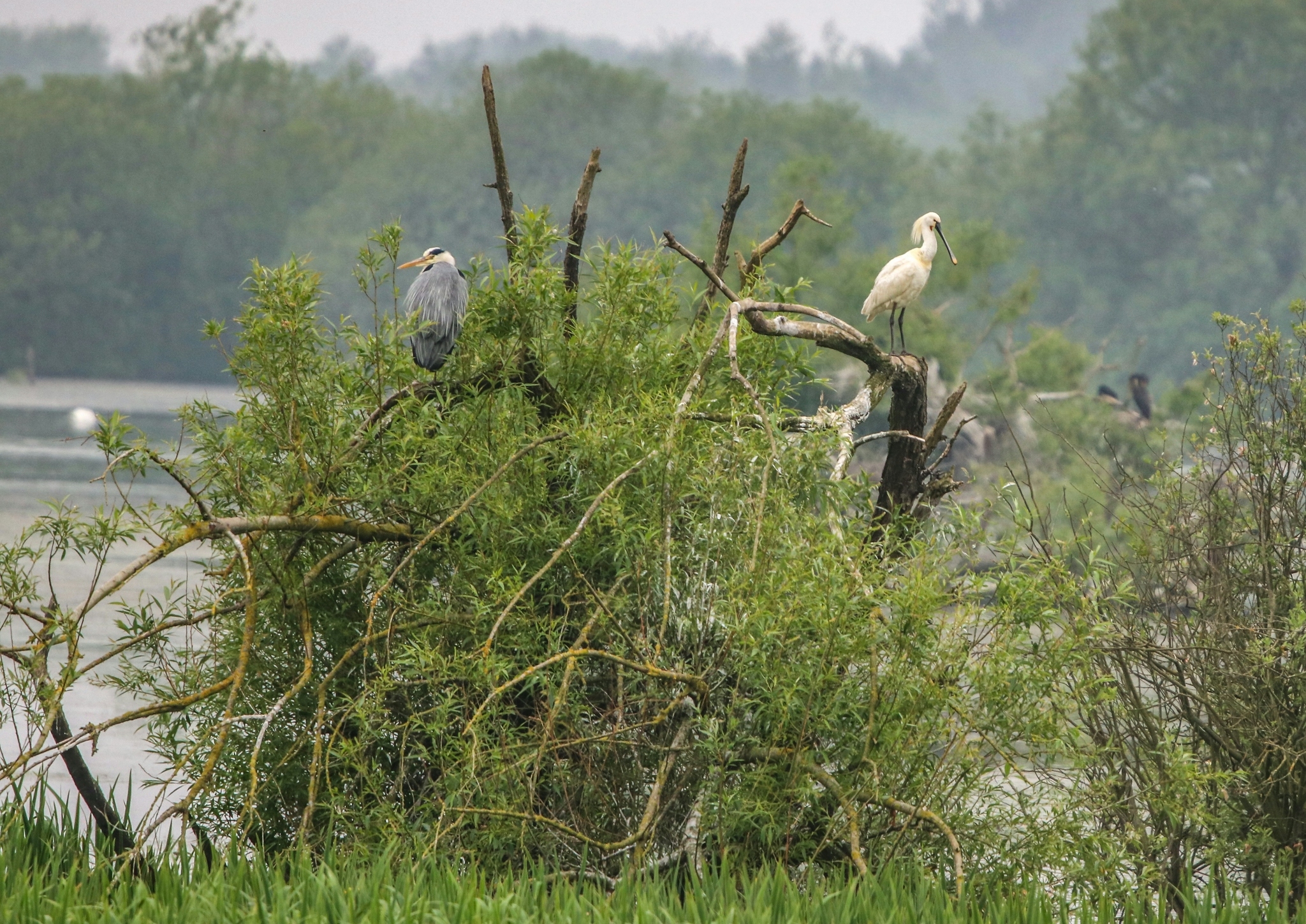
A spoonbill and a grey heron at RSPB Fairburn Ings, taken on my first trip in June 2018
If you’ve got your binoculars with you, spend some time looking over this side of the reserve from the vantage point of the top path around the pools – you’ll see a heronry near to Spoonbill Flash, egrets, cormorants, and geese and, if you’re lucky, even the spoonbills themselves.
Don’t forget to turn your attention to the water beside you. There will be the usual suspects – mute swans, coots, little grebes – and you might see a bittern. Bitterns are so difficult to see that I was convinced they were an urban myth – I’d been squinting at reedbeds for about a decade before my most recent trip to Fairburn Ings with no luck.
On my last visit, I was peering at the reeds on the far side of the largest pit when a long, brown shape dislodged itself from the reedbeds and stepped forward. I couldn’t believe it – had I spotted a bittern at last? And all by myself? The nearest people were a group of birders approaching around the corner, so I kept my bins trained on the bird, tears streaming down my face from the wind, praying it wasn’t just a heron, and waited until they caught me up. When someone kindly put their scope on the bird and confirmed it was a bittern I couldn’t believe my luck – I had only been looking at the reed beds for five minutes!
Can you see the bittern?
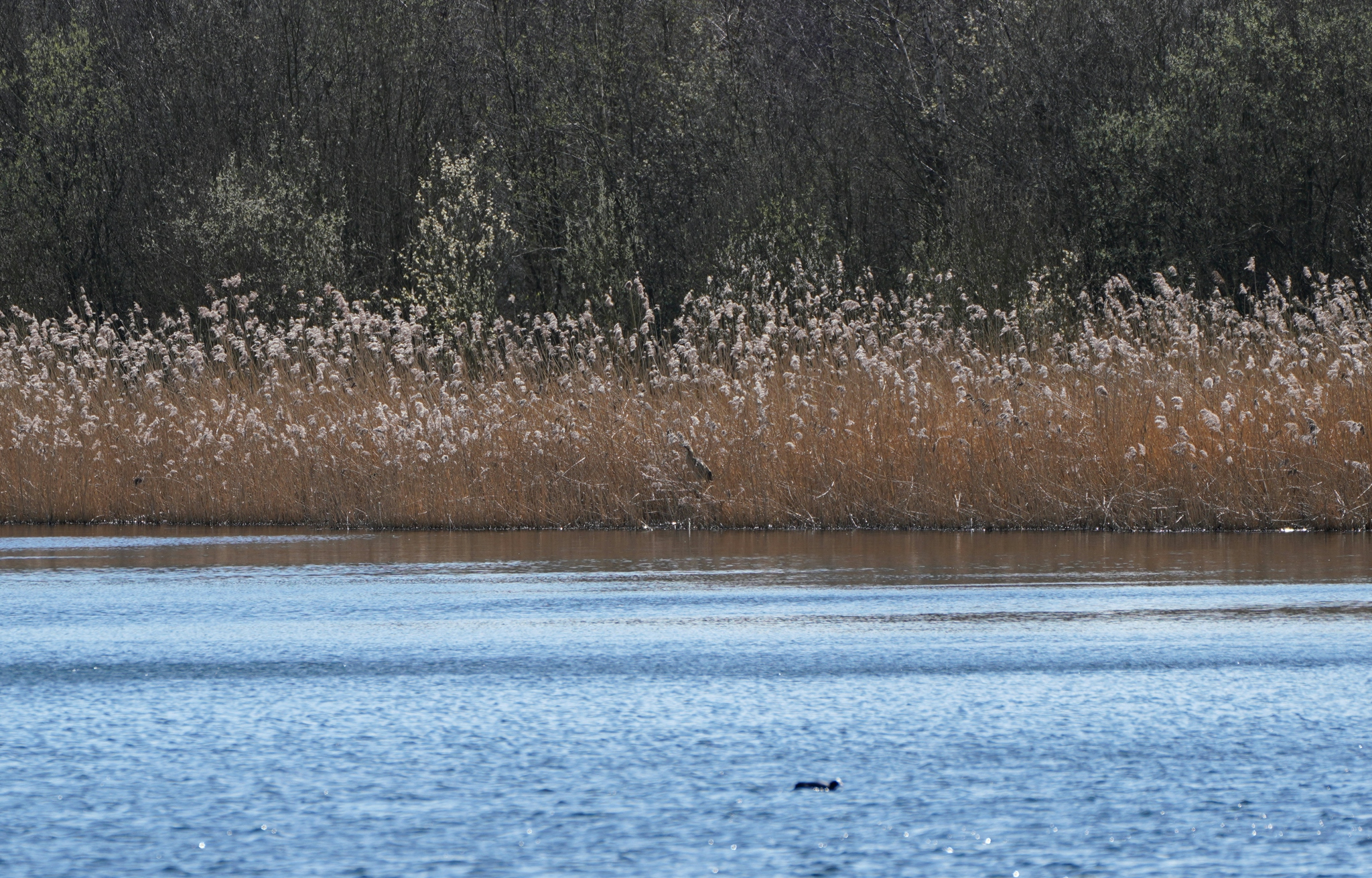
A bittern at RSPB Fairburn Ings
After the bittern moved back into the reeds and disappeared in its incredible camouflage once more, I followed a singing chiffchaff around the back of the big pit until I came to the fork in the path. Here, you can either turn left and loop back round to where you’ve come from, or you can turn right and the path will take you away from the pits, back down the hill towards the river. I chose to press on.
EXPLORING THE LIN DIKE TRAIL
When the path you’re on meets a crossroad, you can continue forward and leave the reserve, walking along the River Aire past Hickson’s Flash, or turn right and follow the Arrow Lane trail to the Lin Dike hide, which looks out over Spoonbill Flash. Instead, I turned left (almost parallel to the Roy Taylor trail we were just on) to join the Lin Dike trail along the River Aire, heading in the direction of the visitors’ centre.
The river path is absolutely lovely – shaded woodland on either side, alive with fluttering butterflies and chattering songbirds. I stopped for a drink to the right of the path and watched a male goldeneye through the trees.
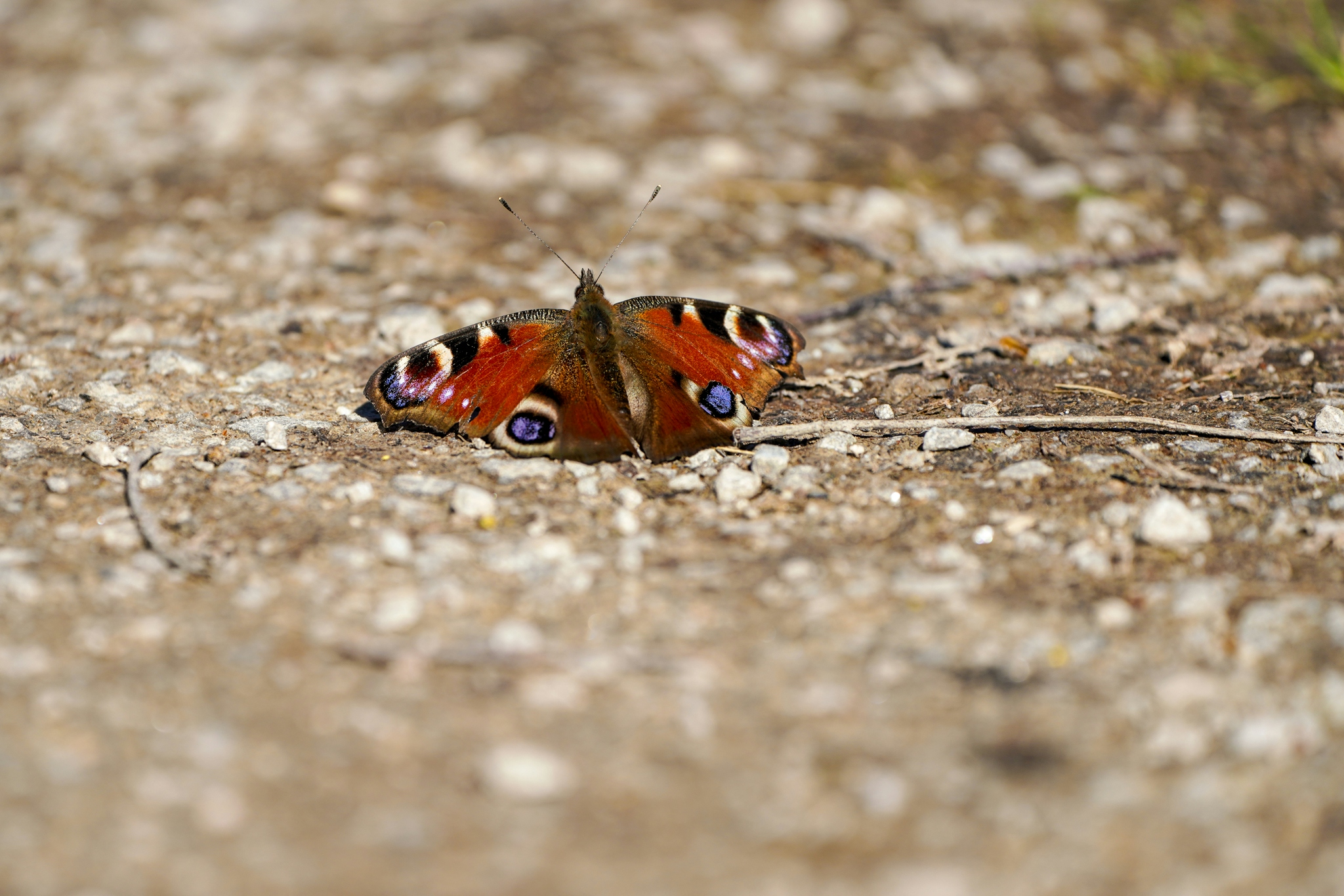
A peacock butterfly on the river path at RSPB Fairburn Ings
Keep your eyes peeled for green woodpeckers and kingfishers when you’re walking along this river path. After 2.4 km/1.5 miles the river path brings you back to the start of the Roy Taylor and riverbank trails.
SPYING THE KINGFISHER
As you walk back down towards the visitor centre, there’s a fence hide to your right that looks out over a small stream. A sign tells you that if you’re lucky, you might see a kingfisher from the path.
I was sceptical – I assumed the sign had been put there to generate interest, but that the chances of actually seeing a kingfisher (a notoriously shy bird) next to such a busy footpath must be slim. I was wrong!
When I passed the fence on my way out into the reserve, I spoke to some photographers who had been there for two hours without any sighting. I thought this confirmed my view that it was unlikely anyone would see a kingfisher there, so I pushed on.
On my way back past, though, the second I arrived at the fence I heard a shout of “there!” and – lo and behold – a perfect male kingfisher was perched on a branch only 6 feet from the hide.
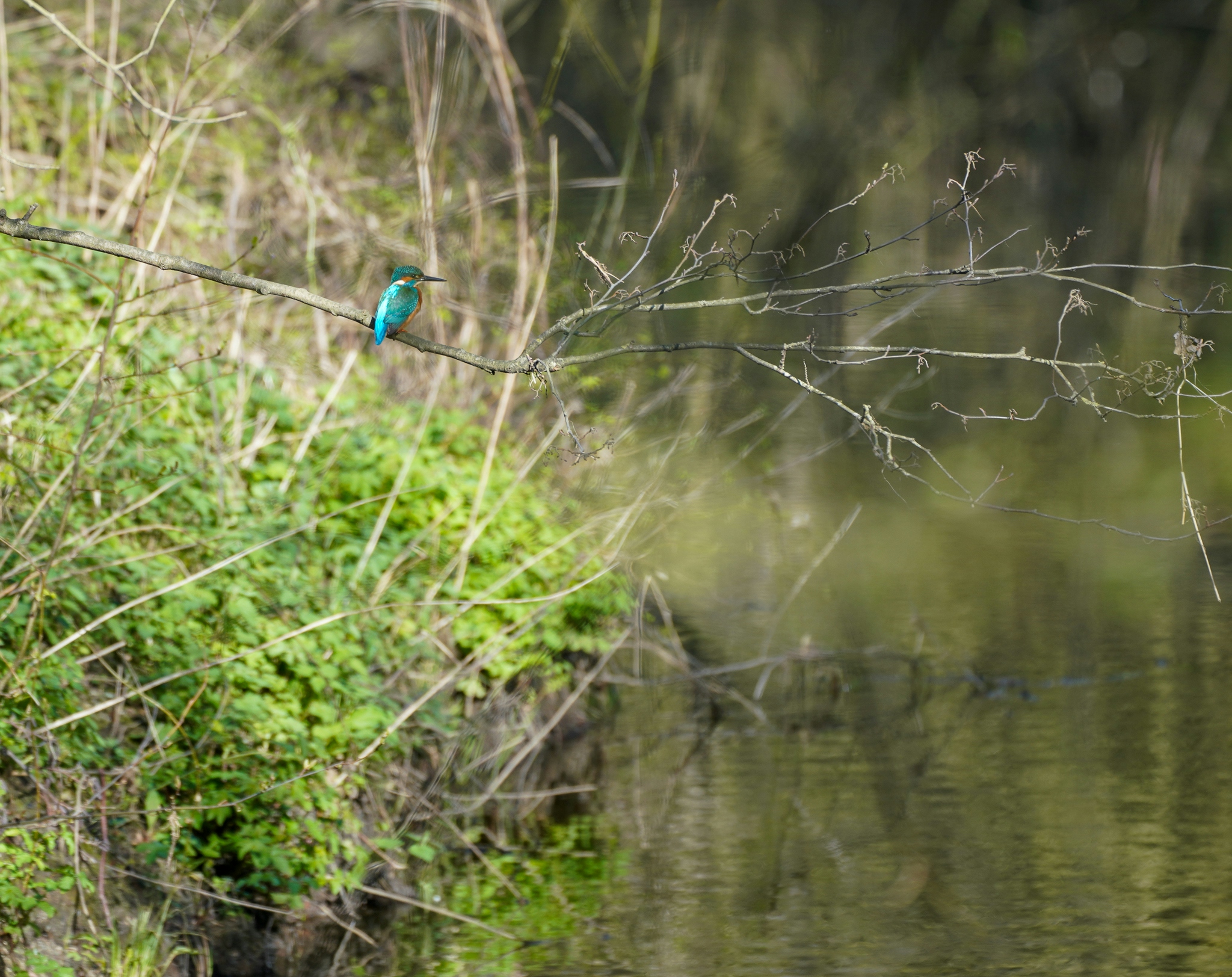
Apparently, it really is common to see kingfishers there – one person even photographed an entire family of kingfishers on the measuring stick in front of the fence. Make some time to stand and look at this stream during your visit, it might just pay off!
Learn more about how to spot kingfishers here and find out how they change colour here!
EXPLORING NEARBY
If you’ve got the stamina after the walk along the riverbank, around the pits, and back along the river path, get yourself down to RSPB St Aidan’s.
Do you love RSPB Fairburn Ings? What have you seen there? I'd love to know.
Share with your friends
Subscribe to learn more
Join me in exploring our natural world and cultural heritage as we learn how to protect and restore it. Get notified on my latest posts and a monthly newsletter on wider conversation topics for us to chat about.
Recent Posts
If you enjoyed this one, then you might like these too.